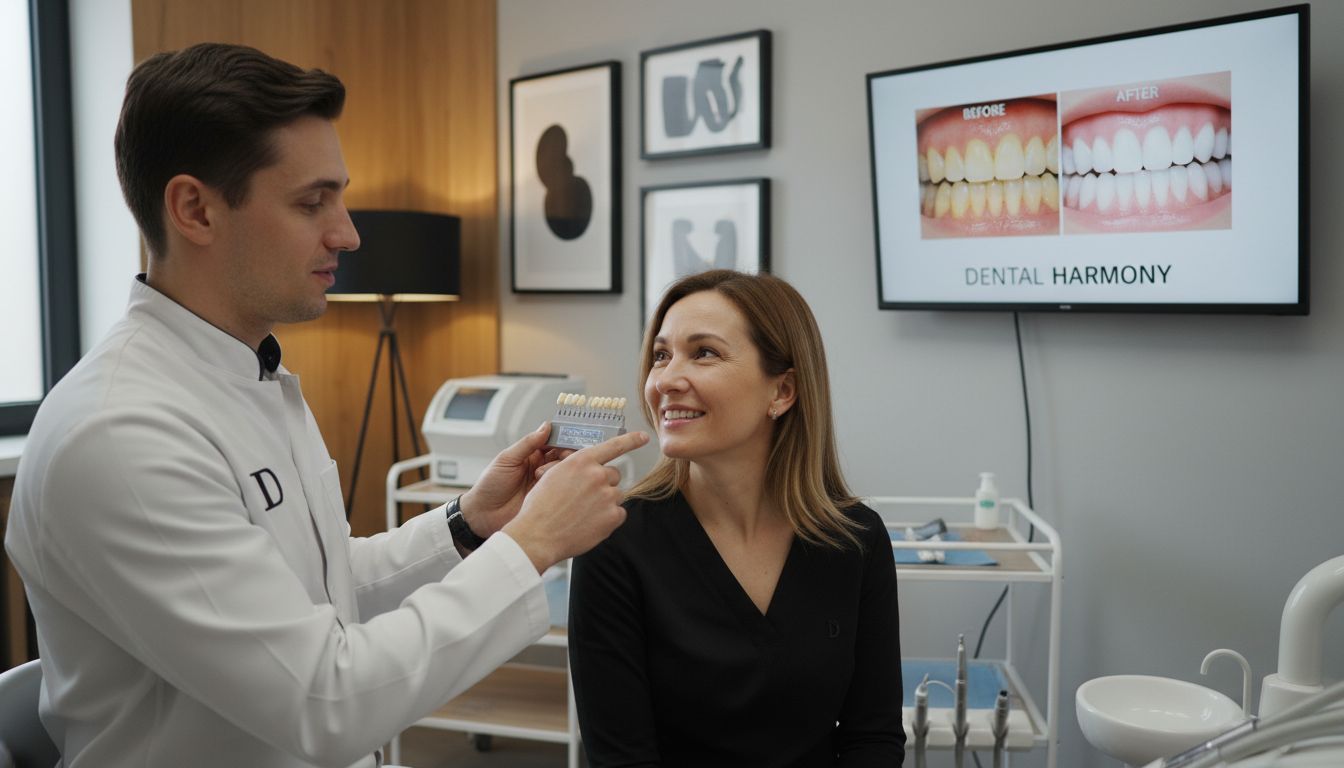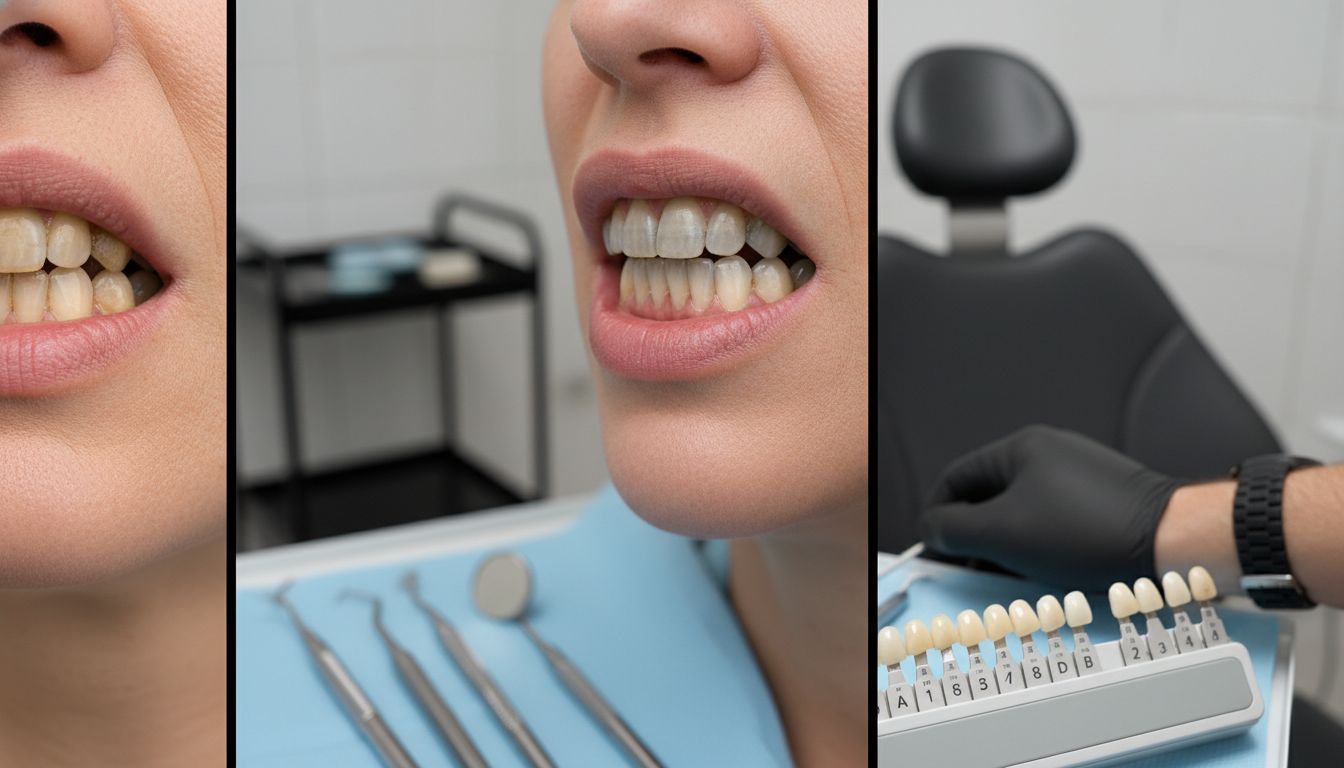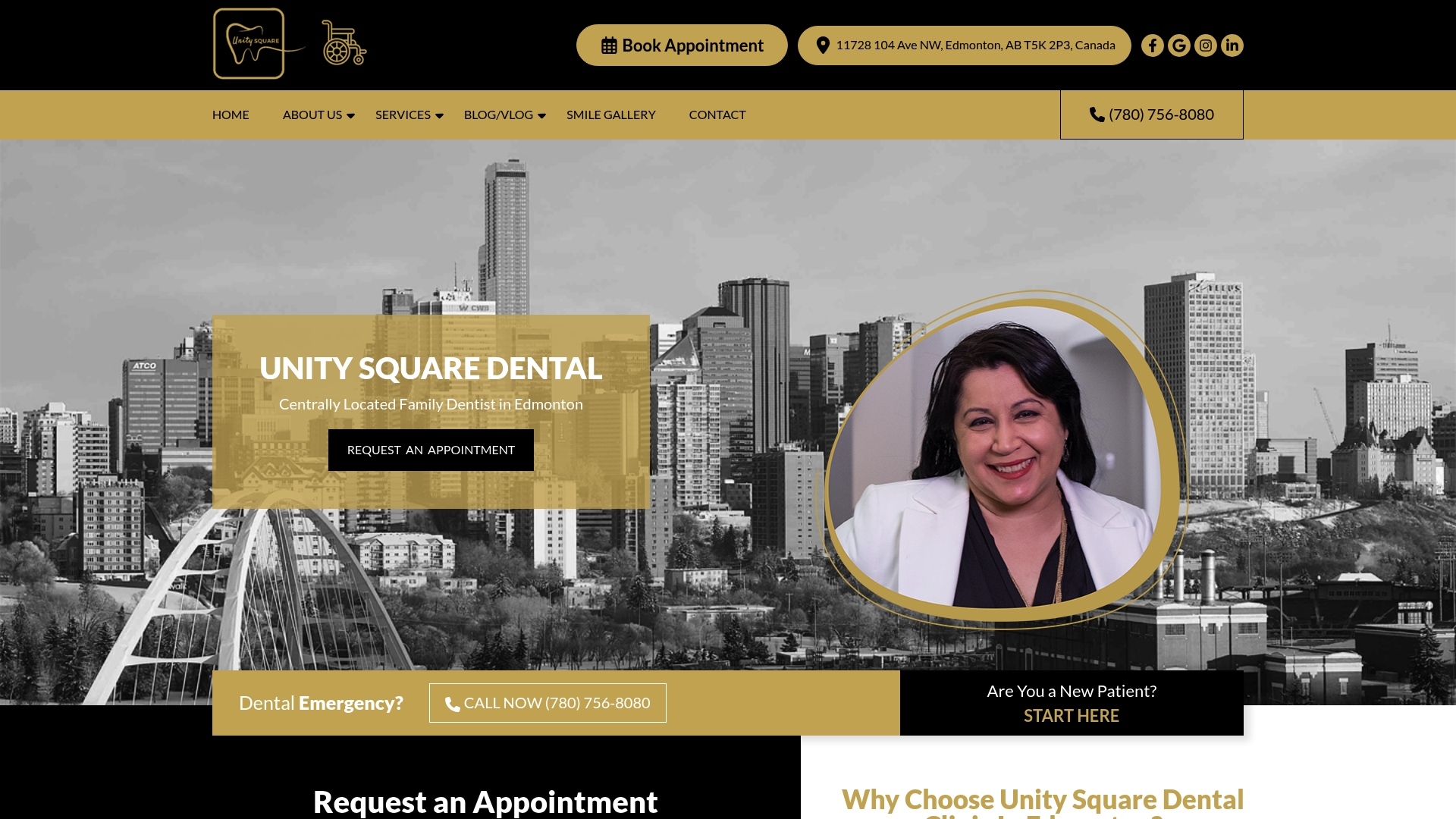
More than half of adults feel self-conscious about the color of their teeth, often hiding their smiles in social settings. Tooth discoloration goes beyond cosmetic worries and can impact confidence and daily interactions. Understanding why teeth lose their sparkle and what causes the change makes it easier to find real solutions that restore both appearance and self-esteem.
Table of Contents
- What Is Tooth Discoloration? Core Concepts
- Types of Tooth Discoloration Explained
- Intrinsic vs. Extrinsic Discoloration Causes
- Lifestyle Factors and Medical Conditions Impact
- Prevention Tips and Treatment Options
Key Takeaways
| Point | Details |
|---|---|
| Tooth Discoloration Types | Discoloration is categorized into extrinsic and intrinsic types, with distinct causes and treatment approaches for each. |
| Causes of Discoloration | Common causes include dietary choices, tobacco use, medications, and genetic predispositions that require targeted prevention and treatment strategies. |
| Prevention and Treatment | Effective management includes maintaining good oral hygiene and considering professional whitening options based on the type of discoloration. |
| Psychological Impact | Tooth discoloration affects self-esteem and social interactions, making awareness and addressing the issue important for overall well-being. |
What Is Tooth Discoloration? Core Concepts
Tooth discoloration represents a common aesthetic dental concern where teeth deviate from their natural white or off-white color, transforming into shades of yellow, brown, gray, or even darker hues. According to a comprehensive review from International Journal of Healthcare Research, tooth discoloration isn’t just a superficial issue but carries significant psychological and social implications for individuals experiencing it.
At its core, tooth discoloration occurs through two primary mechanisms: extrinsic and intrinsic staining. Extrinsic stains develop on the tooth’s outer enamel surface and typically result from external factors like dietary habits, tobacco use, or inadequate oral hygiene. Intrinsic stains, conversely, originate within the tooth’s internal structure and can stem from factors such as medication exposure, genetic conditions, or developmental issues.

As Cleveland Clinic explains, understanding tooth discoloration requires recognizing its multifaceted nature. The process isn’t simply about color change but involves complex interactions between tooth structure and various environmental and physiological factors. Key contributors to discoloration include:
- Consumption of staining substances like coffee, tea, and red wine
- Tobacco and nicotine product usage
- Aging and natural enamel wear
- Certain medications like tetracycline
- Genetic predispositions
- Trauma or internal tooth damage
Recognizing these underlying causes is crucial for developing effective prevention and treatment strategies. While tooth discoloration might seem purely cosmetic, it can significantly impact an individual’s self-confidence and social interactions. Learn more about teeth whitening options for families to understand potential solutions and professional interventions that can restore your smile’s natural brilliance.
Types of Tooth Discoloration Explained
Tooth discoloration is not a uniform phenomenon but a complex condition with distinct categories that help dental professionals understand and address specific staining patterns. International Journal of Healthcare Research provides a comprehensive categorization that divides tooth discoloration into two primary types: extrinsic and intrinsic discoloration.
Extrinsic Tooth Discoloration manifests on the tooth’s outer enamel surface and is typically caused by external factors. According to Cleveland Clinic, these stains are often the result of lifestyle and dietary choices. Common culprits include:
- Frequent coffee and tea consumption
- Red wine drinking
- Tobacco and nicotine use
- Dark-colored sodas
- Poor oral hygiene practices
Intrinsic Tooth Discoloration originates from within the tooth’s internal structure, presenting more complex challenges for treatment. These stains are often deeper and more resistant to standard whitening procedures. Intrinsic discoloration can result from:
- Medication side effects (especially tetracycline)
- Dental trauma
- Genetic conditions
- Developmental disorders
- Excessive fluoride exposure during tooth formation
- Age-related changes in tooth structure
Understanding these nuanced types of discoloration is crucial for determining the most effective treatment approach. Learn more about teeth whitening safety for everyone to explore professional strategies for addressing both extrinsic and intrinsic tooth staining effectively.
Intrinsic vs. Extrinsic Discoloration Causes
Tooth discoloration presents a complex interplay between external and internal factors, each with unique characteristics that significantly impact dental aesthetics. International Journal of Healthcare Research provides a comprehensive breakdown of the distinct mechanisms underlying intrinsic and extrinsic tooth staining, highlighting the nuanced differences between these two primary discoloration types.
Extrinsic Discoloration Causes are predominantly environmental and lifestyle-related, occurring directly on the tooth’s surface. According to Cleveland Clinic, these external stains typically result from frequent exposure to pigmented substances. The most common contributors include:
- Repeated consumption of dark-colored beverages (coffee, tea, red wine)
- Tobacco and nicotine product usage
- Regular intake of chromogenic foods like berries and tomato sauce
- Poor oral hygiene practices
- Certain mouthwashes with chlorhexidine
Intrinsic Discoloration Causes, conversely, originate from within the tooth structure and are often more challenging to address. These internal staining mechanisms can be traced to several profound physiological and medical factors:
![]()
- Medication-induced discoloration (particularly tetracycline antibiotics)
- Dental trauma causing internal bleeding or nerve damage
- Genetic conditions affecting tooth development
- Excessive fluoride exposure during tooth formation
- Advanced age and natural enamel deterioration
- Specific medical treatments like chemotherapy
Do whitening toothpastes actually work for Edmonton families seeking to address these discoloration challenges? Understanding the root causes helps patients and dental professionals develop more targeted and effective whitening strategies tailored to individual dental conditions.
Lifestyle Factors and Medical Conditions Impact
Tooth discoloration is far more than a superficial aesthetic concern, representing a complex interaction between personal habits, medical history, and overall health. Cleveland Clinic reveals that lifestyle choices and underlying medical conditions play a pivotal role in determining the color and appearance of our teeth.
Lifestyle-Induced Discoloration Factors represent a significant category of tooth staining mechanisms. These external influences directly impact dental appearance through consistent exposure to staining agents. Key lifestyle contributors include:
- Tobacco consumption (smoking and chewing)
- Regular intake of dark-colored beverages
- High consumption of chromogenic foods
- Inconsistent or inadequate oral hygiene practices
- Excessive alcohol consumption
Medical Conditions and Systemic Impacts introduce another complex layer of tooth discoloration. According to research from Nepjol, various health conditions and treatments can fundamentally alter tooth coloration. These medical-related discoloration sources encompass:
- Metabolic disorders affecting enamel formation
- Chronic diseases impacting mineral absorption
- Autoimmune conditions disrupting tooth pigmentation
- Side effects from long-term medication treatments
- Hormonal imbalances affecting dental structure
- Radiation and chemotherapy treatments
Understanding teeth whitening safety for everyone becomes crucial when navigating these intricate factors. Recognizing the underlying causes helps dental professionals develop personalized strategies that address both cosmetic concerns and potential health implications.
Prevention Tips and Treatment Options
Tooth discoloration management requires a multifaceted approach that combines proactive prevention and strategic treatment solutions. Cleveland Clinic emphasizes the importance of understanding both preventive measures and professional interventions to maintain optimal dental aesthetics.
Prevention Strategies play a crucial role in minimizing tooth discoloration. Effective approaches include:
- Maintaining rigorous oral hygiene practices
- Using whitening toothpaste with gentle abrasives
- Rinsing mouth after consuming staining substances
- Drinking dark beverages through a straw
- Regular dental check-ups and professional cleanings
- Quitting tobacco products
- Staying hydrated to support natural tooth cleaning
Professional Treatment Options offer more comprehensive solutions for existing discoloration. These interventions range from minimally invasive to more advanced procedures:
- Professional dental cleaning and scaling
- In-office teeth whitening treatments
- Custom take-home whitening kits
- Dental bonding for stubborn stains
- Porcelain veneers for extensive discoloration
- Laser tooth whitening techniques
Interestingly, research from MDPI suggests using fluoride varnish immediately after bleaching as an innovative preventive measure to protect tooth enamel and maintain whitening results. Learn more about teeth whitening options for Edmonton families to explore personalized strategies that address your specific dental needs.
Restore Your Smile by Tackling Tooth Discoloration at Unity Square Dental
Tooth discoloration can deeply affect your confidence and how you feel about smiling. Whether caused by lifestyle habits like coffee or tobacco use, medication effects, or aging, this challenge is more than a cosmetic issue. The article highlights how intrinsic and extrinsic stains develop and why some stains are harder to treat than others. You deserve personalized care that understands these differences and offers effective, tailored solutions.

Take control of your dental health today by exploring professional teeth whitening and cosmetic dentistry options designed for your unique needs. At Unity Square Dental, our Edmonton family-oriented clinic combines advanced technology with a gentle approach to help you achieve a brighter, healthier smile. Learn more about teeth whitening safety for everyone and discover how targeted treatments can address both surface stains and deeper discoloration. Don’t wait to boost your confidence and restore your smile. Book your appointment now and start your journey to stunning, radiant teeth.
Frequently Asked Questions
What are the main causes of extrinsic tooth discoloration?
Extrinsic tooth discoloration is primarily caused by environmental factors, including the consumption of staining substances such as coffee, tea, red wine, and tobacco products. Poor oral hygiene practices can also contribute to this type of discoloration.
How do intrinsic stains occur in teeth?
Intrinsic stains originate from within the tooth structure and can be caused by factors such as medication (especially tetracycline), dental trauma, genetic conditions, and excessive fluoride exposure during tooth formation. These stains are often more difficult to treat compared to extrinsic stains.
What lifestyle factors can lead to tooth discoloration?
Lifestyle factors contributing to tooth discoloration include smoking, high consumption of dark-colored beverages and foods, excessive alcohol consumption, and inadequate oral hygiene. These habits can directly impact the color and appearance of teeth over time.
What preventive measures can help reduce tooth discoloration?
Preventive strategies for reducing tooth discoloration include maintaining regular oral hygiene, using whitening toothpaste, rinsing the mouth after consuming staining substances, drinking dark beverages through a straw, visiting the dentist regularly, and quitting tobacco products.
Recommended
- Causes of Tooth Decay: Complete Guide for Families – Unity Square Dental
- Teeth Whitening Options for Families in Edmonton 2025 – Unity Square Dental
- Understanding Teeth Whitening Safety for Everyone – Unity Square Dental
- Preventing Tooth Decay Naturally: A Step-by-Step Guide – Unity Square Dental
- Why Dental Crowns Don’t Whiten Like Natural Teeth | The Dental Atelier
- The Ultimate Guide to Dental Veneers: Transform Your Smile with Veneers – Paynless Dental Clinic

